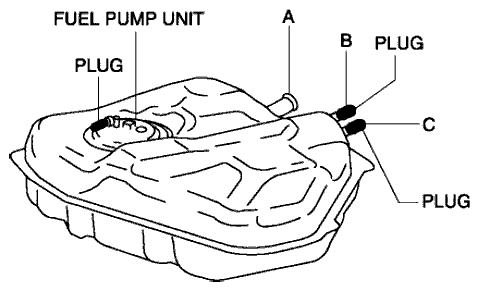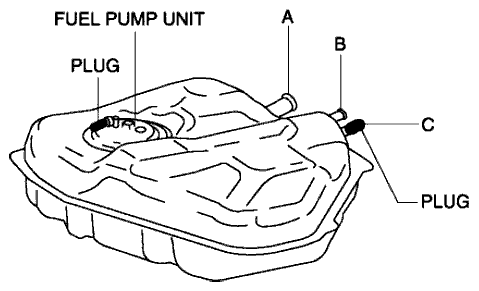Chevrolet Trax: Fasteners
Metric Fasteners
This vehicle provides fastener dimensions using the metric system. Most metric fasteners are approximate in diameter to equivalent English fasteners. Make replacements using fasteners of the same nominal diameter, thread pitch, and strength.
A number marking identifies the OE metric fasteners except cross-recess head screws. The number also indicates the strength of the fastener material. A Posidrive or Type 1A cross-recess identifies a metric crossrecess screw. For best results, use a Type 1A cross-recess screwdriver, or equivalent, in Posidrive recess head screws.
GM Engineering Standards and North American Industries have adopted a portion of the ISO-defined standard metric fastener sizes. The purpose was to reduce the number of fastener sizes used while retaining the best thread qualities in each thread size. For example, the metric M6.0 X 1 screw, with nearly the same diameter and 25.4 threads per inch replaced the English 1/4-20 and 1/4-28 screws. The thread pitch is midway between the English coarse and fine thread pitches.
Fastener Strength Identification
.gif)
Fig. 5: Identifying Fastener Strength Marks
.jpg)
.jpg)
The most commonly used metric fastener strength property classes are 9.8 and 10.9. The class identification is embossed on the head of each bolt. The English, inch strength classes range from grade 2 to grade 8. Radial lines are embossed on the head of each bolt in order to identify the strength class. The number of lines on the head of the bolt is 2 lines less than the actual grade. For example, a grade 8 bolt will have 6 radial lines on the bolt head. Some metric nuts are marked with a single digit strength identification number on the nut face.
The correct fasteners are available through GM SPO. Many metric fasteners available in the aftermarket parts channels are designed to metric standards of countries other than the United States, and may exhibit the following:
- Lower strength
- No numbered head marking system
- Wrong thread pitch
The metric fasteners on GM products are designed to new, international standards. The following are the common sizes and pitches, except for special applications:
- M6.0 X 1
- M8 X 1.25
- M10 X 1.5
- M12 X 1.75
- M14 X 2.00
- M16 X 2.00
Prevailing Torque Fasteners
Prevailing torque fasteners create a thread interface between the fastener and the fastener counterpart in order to prevent the fastener from loosening.
All Metal Prevailing Torque Fasteners
These fasteners accomplish the thread interface by a designed distortion or deformation in the fastener.
Nylon Interface Prevailing Torque Fasteners
These fasteners accomplish the thread interface by the presence of a nylon material on the fastener threads.
Adhesive Coated Fasteners
These fasteners accomplish the thread interface by the presence of a thread-locking compound on the fastener threads. Refer to the appropriate repair procedure in order to determine if the fastener may be reused and the applicable thread-locking compound to apply to the fastener.

Fig. 6: Identifying Adhesive Coated Fasteners
.jpg)
A prevailing torque fastener may be reused ONLY if:
- The fastener and the fastener counterpart are clean and not damaged
- There is no rust on the fastener
- The fastener develops the specified minimum torque against its counterpart prior to the fastener seating
Metric Prevailing Torque Fastener Minimum Torque Development
.jpg)
English Prevailing Torque Fastener Minimum Torque Development
.jpg)
.jpg)
THREAD INSERTS
General Purpose Thread Repair Kits.
These kits are available commercially.
Repair Procedure

Fig. 7: Drilling & Tapping Damaged Threads
WARNING: Refer to Safety Glasses Warning .
NOTE: Refer to the thread repair kit manufacturer instructions regarding the size of the drill and tap to use.
Avoid any buildup of chips. Back out the tap every few turns and remove the chips.
- Determine the size, the pitch, and the depth of the damaged thread. If necessary, adjust the stop collars on the cutting tool and tap to the required depth.
- Drill out the damaged threads. Clean out any chips.
- Lubricate the tap with light engine oil. Tap the hole. Clean the threads.

Fig. 8: View Of Thread Insert
- Thread the thread insert onto the mandrel of the installer. Engage the tang of the insert onto the end of the mandrel.
NOTE: The insert should be flush to one turn below the surface.
- Lubricate the insert with light engine oil, except when installing in aluminum and install the insert.
- If the tang of the insert does not break off when backing out the installer, break the tang off with a drift.
REGISTERED AND NON-REGISTERED TRADEMARKS
Listed below are Registered Trademarks () or Non-Registered Trademarks () which may appear in this service manual.
Registered and Non-Registered Trademarks
.jpg)
.jpg)
.jpg)
.jpg)
DOOR LOCK AND IGNITION LOCK FOLDING AND NON-FOLDING KEY CUTTING
High Security keys are available from the service parts system.
Obtain the key code from the security card or from the GM Dealer World, Parts, Key Code Look Up system.
If you have the key code and access to a Triax-E., BD Laser or other code key cutting machine from the GM Dealer Equipment Catalog, you may cut a new key.
If you have the original key and access to a Matrix S, BD Laser or other key duplicating machine, you may duplicate the key.
If you do not have a high security key cutting machine, order the side cut key from the service parts system.
Include the key code in the NOTE field. Indicate the timing and the method of the shipment.
Inspect the new key operation in the lock cylinder. Ensure the new key operates effectively.

